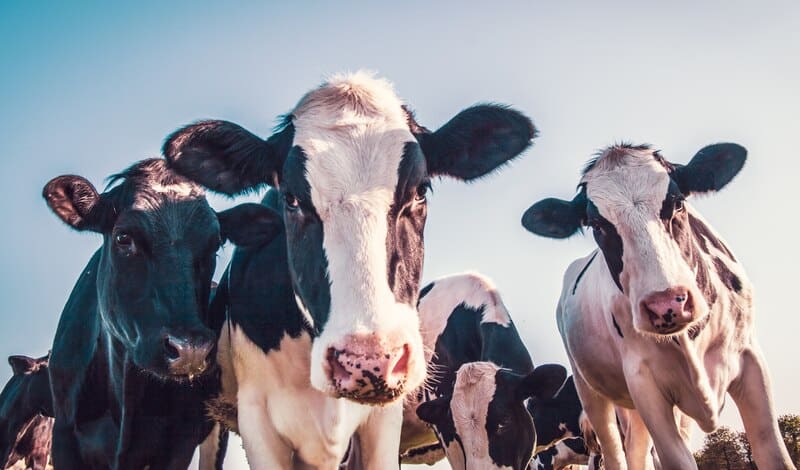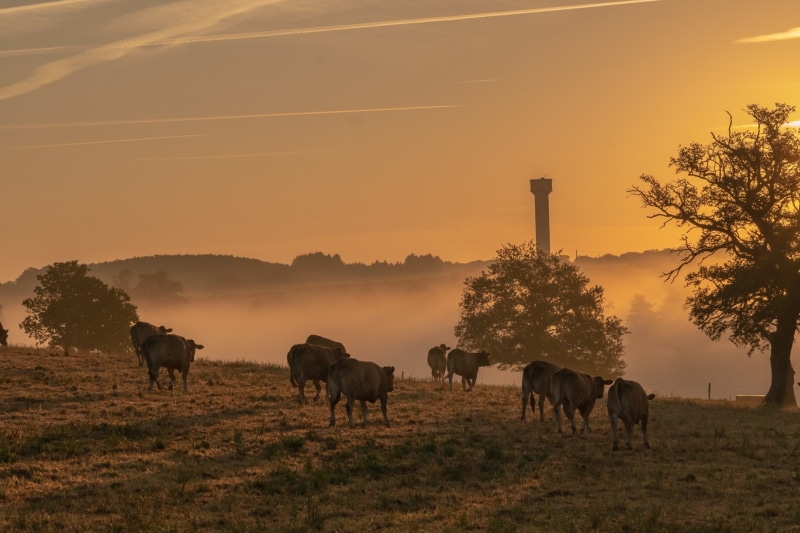The United Nations Climate Change Conference (COP27) in Egypt will be the first time that food production and food-based solutions are part of global climate negotiations.
It is well-known that the methods used in food production have a significant effect on the planet, especially when it comes to animal husbandry. Although food production should be a central focus of the annual United Nations Climate Change Conference, it has been largely ignored for the past nearly three decades.
The environmental impact of what you eat is much greater than that of taking shorter showers, riding public transit, or using reusable bags when shopping. Livestock farming is one of the main causes of global warming.
To put it plainly:
- Crops grown on irrigated land are used to supplement animal diets.
- Food and water are being utilized to fatten up the animals that will eventually be slaughtered.
- Polluting our air and water with carbon dioxide (CO2), methane (CH4), and their own waste, the animals are a major source of environmental degradation.
- Semi-trucks bring in livestock, which is then slaughtered in massive, industrial-style slaughterhouses; the resulting meat and other products are then packed and distributed nationally and internationally.
- Nearly half of the total land area of the lower 48 states is utilized for farming, with the vast majority of this land dedicated to raising livestock for human consumption. In addition, livestock irrigation consumes almost half of the country’s total water supply.
That’s going to change at this year’s COP 27, the Conference of the Parties to the United Nations Framework Convention on Climate Change (UNFCCC). Food production and food-related climate solutions will be on the COP agenda for the first time during the upcoming meeting, which will take place from November 6-18 in Sharm El Sheikh, Egypt.
Co-hosted by nine groups, including the United States Good Food Institute (GFI), this Pavilion will encourage governments around the world to investigate plant-based and cell-based meat alternatives as food solutions to the climate dilemma.

This is the first time that food and agriculture have been included in the COP discussions, although they have major effects on the global climate. GFI’s Media and Communications Manager Maia Keerie tells VegNews that COP27 will feature the first-ever Food Systems Pavilion, which will put “food and food-based solutions” at the center of global climate negotiations. As a crucial food-based solution, one that reduces the need for antibiotics in meat production and eliminates meat’s contribution to pandemic risk, “GFI will be at COP27 pressing national governments to include alternative proteins in their national climate plans.”
The climate problem and animal agriculture
Consumption is inevitable, and we must all eat to stay alive; but, the production of all the goods we use has an effect on the planet. Nonetheless, there are items out there that are far worse than others. A rising body of evidence suggests that farming animals for food (whether it is meat, eggs, or milk) is significantly more harmful to the environment than farming plants.
Keerie claims that the existing methods of meat production are to blame for issues such as global hunger, deforestation, and greenhouse gas emissions. Animal agriculture is the primary reason for forest loss. Nearly half of tropical deforestation can be attributed to an increase in pasture area for cattle, while nearly a fifth is caused by cropland for animal feed.

Feeding plants to animals, which are later slaughtered for human sustenance, is one potential answer. By processing these plants into a product that mimics the characteristics of meat, customers will be able to switch to a protein source that is easier on the environment with little to no noticeable change in their diet.
While cellular agriculture is still in its infancy, meat is grown from a small sample of animal cells that already exist. This method of producing meat moves away from the exploitation of millions of animals on factory farms and instead uses a bioreactor to allow for the growth of meat without the slaughter of animals.
At COP27, GFI plans to bring up these issues to shift world leaders’ perspectives on animal agriculture in light of the climate problem.
Since “global demand for meat is predicted to almost double by 2050,” Keerie argues, “we need new means of serving the world’s protein demands while lowering pressure on the planet and enhancing global food system resilience.”
Similar to how the globe is modifying its energy production, Keerie argues that the meat industry must also adapt. To meet the rising demand for meat with a fraction of the emissions and land use of industrial animal agriculture, “alternative proteins, notably meat manufactured from plants and developed from cells, are crucial.”
Convention on Climate Change COP27 marks a new standard in climate negotiations
Due to the inclusion of food production, COP27 will be very different from previous climate conferences. While beef burgers and chicken pizzas were served during last year’s COP26 in Glasgow, Scotland, efforts were made to include plant-forward meals on the menu. Overall, there were still plenty of meat and dairy options on the “plant-forward” table at COP26.
Unfortunately, issues of animal agriculture were still left out of climate strategies, which was the major reason this symbolic initiative failed. During COP26, US Vice President Joe Biden and EU leaders launched the Global Methane Pledge to reduce the use of greenhouse gas. One hundred countries have already committed to this initiative, and they hope to reduce methane emissions by 30 percent by the year 2030. What’s wrong? Even though livestock production is a major source of methane emissions, the pledge mostly ignored this problem.

To make substantial progress on global climate commitments, Keerie suggests adding animal agriculture and food system-based solutions to COP27 talks. Unless the climate implications of traditional animal husbandry are addressed, “it will be impossible for global governments to reach the Paris Agreement,” she argues. Furthermore, COP26 promises by world leaders to halt and even reverse deforestation are impossible to implement.
Progress can be made with the help of alternative proteins.
Biden signed an executive order earlier this month to make the United States a global leader in biotechnology. This includes the use of biotechnology in the agricultural supply chain through techniques like cellular agriculture. By taking this step, the country is joining the ranks of those that have recognized new technology in the alternative protein industry as a potential answer to the global warming challenge.
Leaders at COP27 must move quickly to transition the world away from animal agriculture through significant investment and policy changes, just as they have with other industries like solar energy if any genuine progress is to be accomplished.
To secure food security and limit the rate of species extinction, Keerie argues the world needs to rehabilitate at least a billion hectares of degraded land (an area the size of China) to satisfy the Paris Agreement. When it comes to reducing emissions and reversing deforestation, “alternative proteins are a tremendous solution,” as one researcher put it.
According to Keerie, for governments around the world to make a real difference in the pursuit of developing and commercializing alternative proteins, they would need to allocate $10 billion annually. Additionally, expanding the production of alternative proteins has the potential to boost the world economy by $1.1 trillion per year and generate almost 10 million new jobs.
The full societal benefits of plant-based and cultured meat, and making these options accessible to all, require global governments to engage in open-access research and provide private sector incentives. A solar revolution fueled by publicly financed research has dramatically reduced the price of solar energy, as Keerie explains. The time has come for governments to bring about a “protein revolution” by investing in the development of plant-based and produced meat that is equally tasty and accessible to the general public as conventional meat.








